Disclaimer: This blog post contains affiliate links. If you make a purchase through these links, I may earn a small commission at no additional cost to you. Learn More. Thank you for supporting our garden community.
Indigo Rose Tomato: Growing Black Tomatoes in Your Garden
Last Updated: October 12, 2024
The Indigo Rose tomato stands out among other tomato varieties due to its striking dark purple / black colour and impressive health benefits. If you’re looking to add a unique touch to your vegetable garden, the Indigo Rose tomato is a fantastic choice for you.
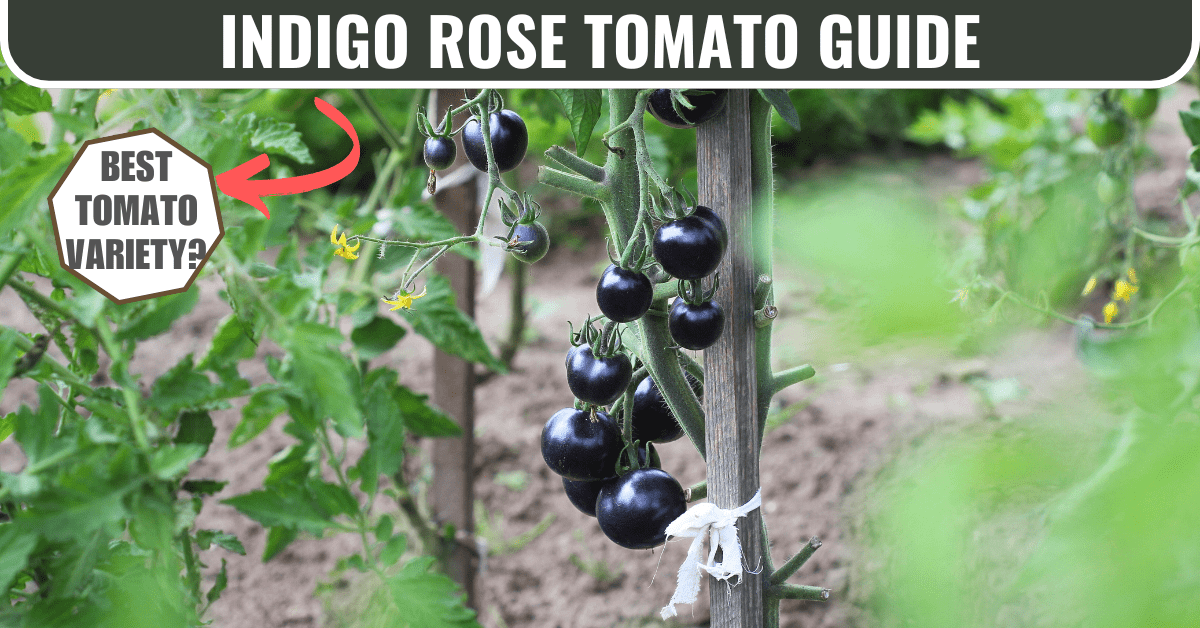
The indigo rose tomato has just recently got out and is hitting gardeners around the world for its striking appearance and excellent flavour.
How to Grow the Indigo Rose Tomato
Here’s what you will learn in this comprehensive article:
- Unique Characteristics: What makes the Indigo Rose tomato stand out, including its deep purple colour, high antioxidant content, and distinct flavour profile.
- Growing Tips: Step-by-step instructions on how to grow Indigo Rose tomatoes, including seed starting, soil preparation, transplanting, and proper care.
- Harvesting Guidance: How to identify when the Indigo Rose tomatoes are fully ripe and ready to be harvested based on colour and firmness.
- Health Benefits: The nutritional advantages of Indigo Rose tomatoes, particularly their high levels of anthocyanins and Vitamin C, and their role in a healthy diet.
History and Background of Indigo Rose Tomato
The indigo rose tomato is a result of years of breeding and development. It was first introduced to the market in 2012 by Jim Myers from Oregon State University. That being said, this is fairly new and unrecognized tomato variety in the gardening world.
This variety stands out with its purplish-black tomato fruits, making it a visually striking addition to any summer garden.
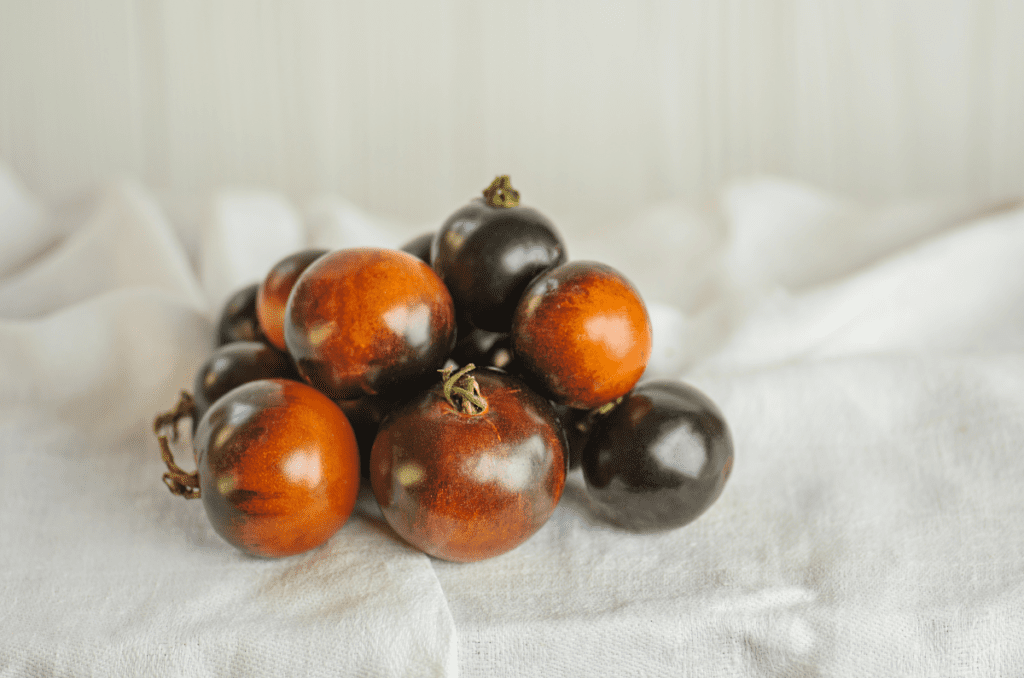
What Makes the Indigo Rose Tomato Special?
The Indigo Rose tomato isn’t just eye-catching with its deep purple skin—it’s packed with antioxidants, particularly anthocyanins. These powerful antioxidants are also found in blueberries, making the Indigo Rose tomato not only visually appealing but also great for your health.
Anthocyanins develop in the fruits of plants (including this tomato variety) only after they have been exposed to sunlight. That being said, sunlight is what gives these dark tomatoes their colour. If any fruits are not exposed to the sun, they will not develop their characteristic colour, and will therefore be lower in antioxidants.
Additionally, this plant is a semi-determinate tomato variety. Most of us have heard of the indeterminate and determinate tomato varieties, where indeterminates grow forever until the first frost, while determinates grow only to a set height.
On the other hand, semi-determinate tomato varieties are those that do not fit the category of determinate or indeterminate; they can exhibit a mix of both traits. Or it can be the case that some plants will be determinate and some will be indeterminate, from the same seed packet.
Health Benefits of Indigo Rose Tomatoes
Indigo Rose tomatoes are not just a treat for your taste buds; they’re packed with nutrients that offer several health benefits:
- High in Anthocyanins: The deep purple skin is rich in anthocyanins, known for their anti-inflammatory and antioxidant properties.
- Loaded with Vitamin C: Like other tomatoes, the Indigo Rose tomato is a great source of Vitamin C, boosting your immune system and skin health.
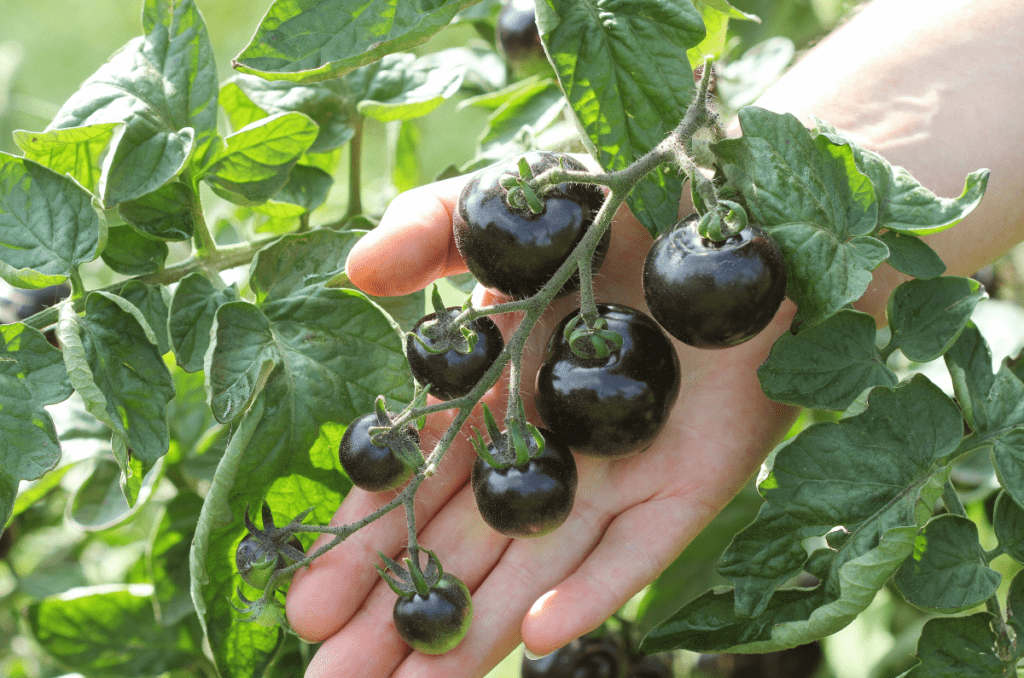
Why Choose the Indigo Rose Tomato for Your Garden?
If you’re seeking a tomato that not only stands out in appearance but also delivers on nutrition, the Indigo Rose tomato is a top contender. Its disease resistance and adaptability to various climates make it a reliable option for many home gardeners. Plus, the health benefits of Indigo Rose tomatoes are unmatched, giving you more reasons to plant them in your garden this season.
Now, let’s get into how to grow these beautiful and delicious tomatoes in your own garden.
Planting and Soil Preparation
The Indigo Rose tomato thrives in well-draining soil rich in organic matter. Prepare the garden bed by mixing compost and organic fertilizer to boost nutrient levels. Ensure the area gets at least 6 hours of direct sunlight daily.
Starting Seeds Indoors
Start your Indigo Rose tomato seeds indoors about 6-8 weeks before the last frost. Plant the seeds 1/4 inch deep in seed-starting mix and keep them in a warm, sunny location. I like to use these seedling heat mats to keep my young plants warm. They are easy to use and get to a nice, warm temperature, perfect for most seedlings.
Transplanting Outdoors
After the danger of frost has passed, harden off your seedlings by gradually exposing them to outdoor conditions. Plant the Indigo Rose tomato seedlings 18-24 inches apart in a sunny spot. Typically the same spacing requirements as regular tomatoes.
Watering and Maintenance
Consistent watering is key. Water deeply but infrequently, and avoid getting the leaves wet to prevent disease. Pruning the lower leaves and staking the plant will help air circulation and reduce the risk of fungal issues. Check out these 5 tomato trellis ideas to learn more.
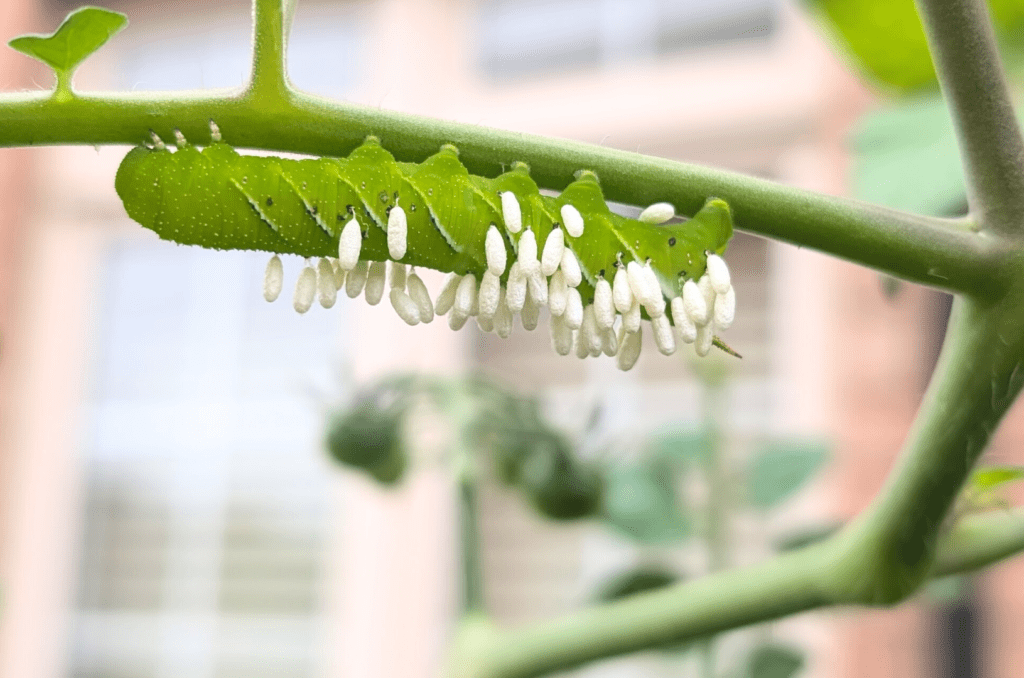
Pest and Disease Management for Indigo Rose Tomato Plants
While indigo rose tomatoes are relatively resilient, they may still face challenges from pests and diseases. Keep an eye out for common tomato pests such as aphids and tomato hornworms. Implement natural pest control methods like companion planting and using organic insecticides if necessary.
Additionally, be vigilant about identifying and addressing common tomato diseases such as fungal infections, powdery mildew, or early blight.
Harvesting and Flavour
One of the fascinating aspects of the Indigo Rose tomato is its ripening process. These tomatoes start off deep purple due to the anthocyanins (as long as they are exposed to sunlight), but they turn a rich red on the bottom when fully ripe. The best way to tell when your Indigo Rose tomatoes are ready to harvest is by checking that the bottom of the fruit is red.
The flavour of Indigo Rose tomatoes is sweet, tangy, and slightly fruity, making them perfect for salads, salsas, or fresh snacking.
Discussion Questions:
- Have you ever grown Indigo Rose tomatoes in your garden? If so, what did you think of their flavor and appearance compared to other tomato varieties?
- What’s your favorite way to use Indigo Rose tomatoes in the kitchen? Do you prefer them fresh in salads, cooked in sauces, or something else entirely?
Please let us know in the comments below!
Frequently Asked Questions
The taste is similar to other tomatoes, but with an underlying smokiness that is especially shown in raw dishes.
When fully ripened, indigo rose tomatoes will reach a size of about 1-2 inches, or 2-5 cm, in diameter. This is larger than most cherry tomatoes, but smaller than beefsteak varieties.
Indigo Rose tomato seeds are widely available from online seed sellers and gardening stores.
Even More Gardening Ideas
Here are a few more posts to get the ball rolling in your garden!
- How to Grow Juicy and Flavourful Tomatoes
- 5 Indeterminate Tomato Trellis Ideas
- 6 Best Companion Plant Combinations to Increase Yields
Products
To buy high-quality seeds for your garden, check out Burpee.
For a wide selection of perennial garden plants, check out Nature Hills Nursery.
For gardening equipment, check out Bootstrap Farmer
The Indigo Rose tomato is a showstopper with its dark, almost black skin and vibrant red interior. Growing this unique tomato variety can add a splash of colour to your garden while also providing a nutritious boost to your meals. Whether you’re a seasoned gardener or a beginner, the Indigo Rose tomato is a must-try heirloom for your vegetable patch.
If you learned something from this article, make sure to share it with your friends. Also, consider signing up for our email newsletter; don’t worry, we won’t spam you, we’ll just send you fresh gardening tips every Monday and Friday.
If you want to learn more about gardening, foraging, nature, and sustainability, check out The Real Gardener on Instagram, YouTube, and Pinterest.
This post was linked to in County Road 407’s Farmhouse Friday Blog Hop, as well as Ridge Haven Homestead’s Sunday Sunshine Blog Hop, so check them out to learn more.
Pin this post for later:
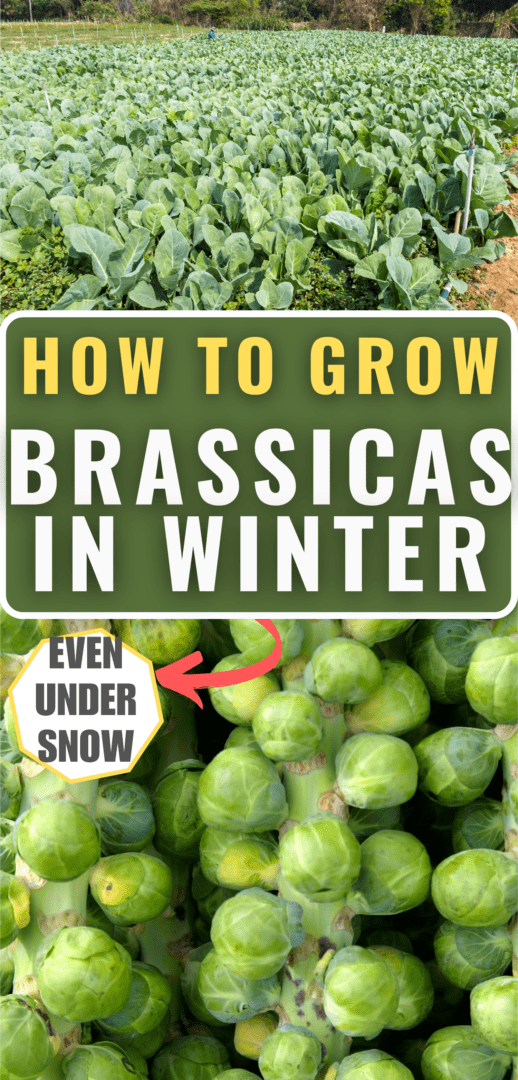
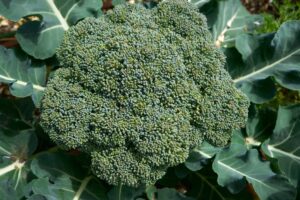
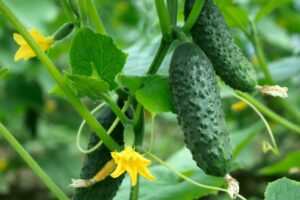


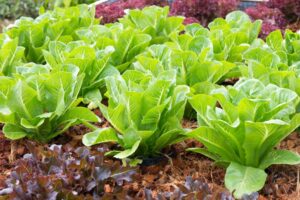

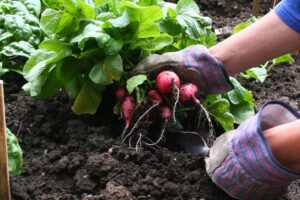
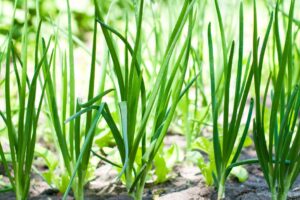
This is very interesting, never seen this in a shop before. Will have to search and see if available in my area.
I visited you via Ridge Haven Homestead. My entries are #8+9. Feel free to join SSPS Linkup M-S: https://esmesalon.com/tag/seniorsalonpitstop/
Hey Esme! Thanks for stopping by. I will definitely check out your entries in the blog hop. Check out some of my other content if you are interested! Have a good day.